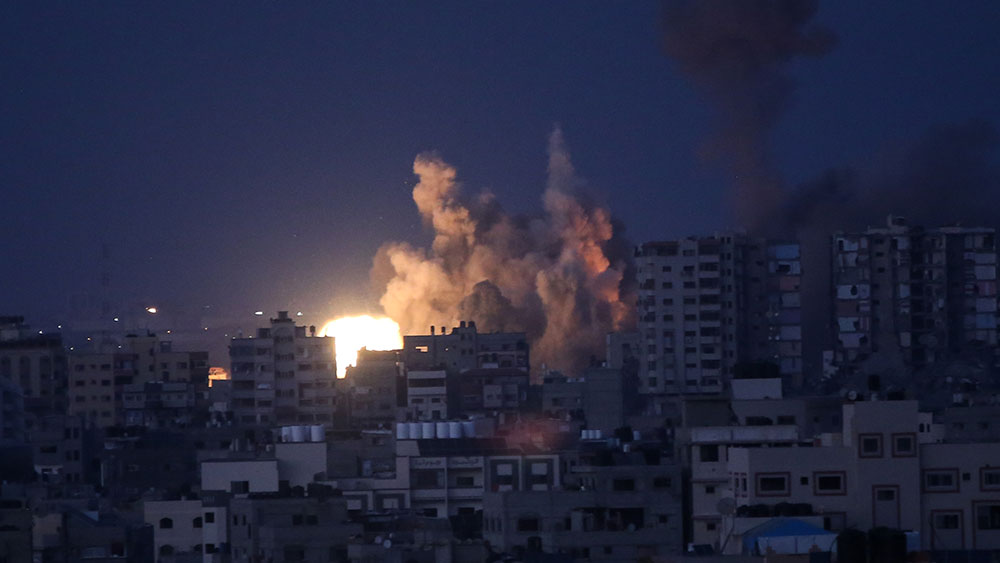 Parler
Parler Gab
Gab
Hunger compounded with diseases to cause more deaths in Gaza: WHO
As starvation becomes utterly prevalent in the Strip, the World Health Organization (WHO) also released a warning that illnesses, most acutely among children, pregnant and breastfeeding women and older people, are to be expected to thrive. WHO said that Gaza is already experiencing soaring rates of infectious diseases. In fact, over 100,000 cases of diarrhea have been reported since mid-October and half of these are among young children under the age of five years, case numbers that are 25 times what was reported before the conflict. In addition, more than 150,000 cases of upper respiratory infection and numerous cases of meningitis, skin rashes, scabies, lice and chickenpox have been reported. Hepatitis is also suspected as many people present with the tell-tale signs of jaundice. According to the WHO, since people scramble for food, malnutrition increases the risk of children dying from illnesses like diarrhea, pneumonia and measles, especially in a setting where they lack access to life-saving health services. "While a healthy body can more easily fight off these diseases, a wasted and weakened body will struggle. Hunger weakens the body’s defenses and opens the door to disease," a WHO spokesperson said in a Dec. 21 article. "Even if the child survives, wasting can have life-long impacts as it stunts growth and impairs cognitive development." Furthermore, it alerted that breastfeeding mothers are also at high risk of malnutrition. From zero to six months of age, a mother's milk is the best and safest food a baby can get. This protects the child from nutritional deficiencies and catching deadly diseases, especially when access to safe drinking water is extremely limited. Lack of sanitation and hygiene and a collapsing health system further add to the toxic mix as over 1.9 million people have been displaced from their homes and over 1.4 million are staying in overcrowded shelters. These conditions expose them to infectious diseases. "In Gaza today, on average, there is only one shower for every 4,500 people and one toilet for every 220. Clean water remains scarce and there are rising levels of outdoor defecation. These conditions make the spread of infectious diseases inevitable. Unfortunately, access to health services across Gaza has gone down as the war continues to degrade the health system," WHO said and further reiterated its call for an immediate humanitarian ceasefire. Check out Starvation.news for more stories related to famine and hunger brought about by global conflicts. Sources for this article include: News.AntiWar.com IPCInfo.org HRW.org WHO.intCalifornia’s population numbers drop to 2015 pre-COVID levels as EXCESS DEATHS soar
By Ethan Huff // Share
Israel has dropped more than 65,000 TONS of bombs on Gaza since Oct. 7
By Arsenio Toledo // Share
Kim Jong Un: U.S., Japan and South Korea may team up to LAUNCH NUKES against North Korea this year
By Arsenio Toledo // Share
Governments continue to obscure COVID-19 vaccine data amid rising concerns over excess deaths
By patricklewis // Share
Tech giant Microsoft backs EXTINCTION with its support of carbon capture programs
By ramontomeydw // Share
Germany to resume arms exports to Israel despite repeated ceasefire violations
By isabelle // Share










